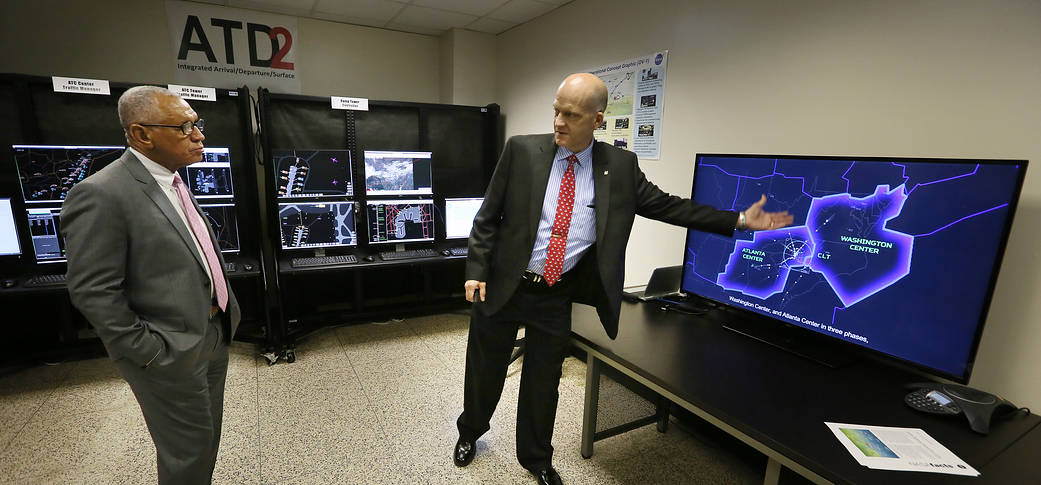
NASA Aeronautics’ Shawn Engelland (right) briefs NASA Administrator Charlie Bolden on how multiple streams of data will be displayed and coordinated through a new airspace technology demonstration laboratory called “ATD-2” at Charlotte Douglas International Airport (CLT). The lab is part of a five-year test project aimed to streamline the arrival and departure of aircraft and improve surface operations to increase safety and efficiency and reduce fuel use in our nation’s aviation system.
On June 24, U.S. Transportation Secretary Anthony Foxx joined Bolden and representatives from the Federal Aviation Administration (FAA), National Air Traffic Controllers Association, American Airlines, and the airport to celebrate the official opening of the lab.
The ATD-2 field tests, which involve NASA, the FAA, CLT, American Airlines and others, are scheduled to begin in the fall of 2017. Technologies tested as part of ATD-2 will coordinate schedules between the ramp, tower, terminal, and center control facilities, giving air traffic managers the tools to make better decisions about how to reduce congestion. ATD-2 will also help to ensure that aviation system is able to absorb the more than four billion additional passengers that are estimated to be traveling globally over the next 20 years without compromising the safety of our skies.

































